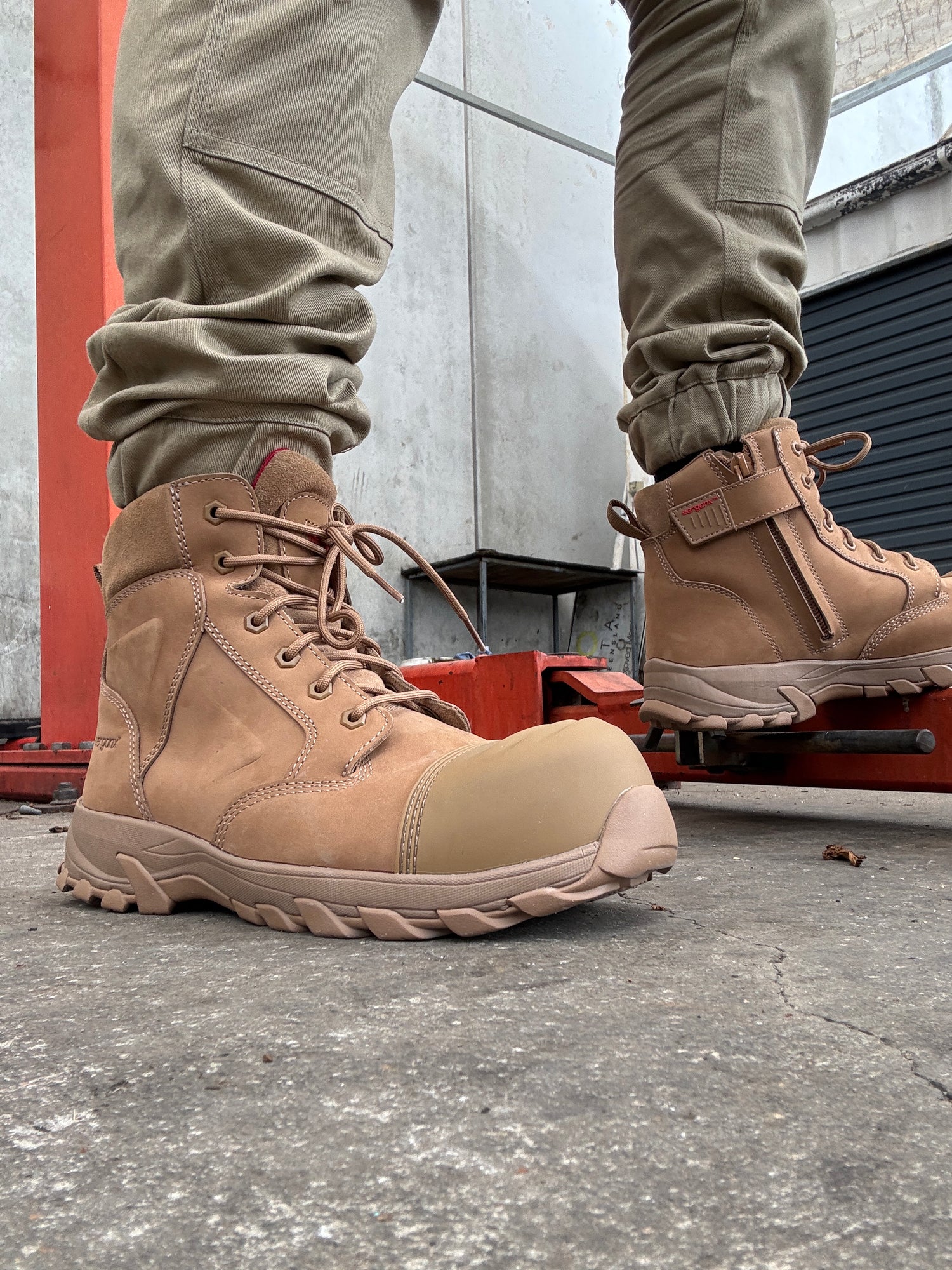How to Choose the Best Work Boots – Podiatrist-Recommended Safety Boots
It can be a challenge to find the right pair of work boots. Regardless of your line of work, you want a boot that will not only protect your feet but also leave your feet feeling comfortable and painless at the end of the day.
Many aspects go into forming work boots, and that is because they serve a specialized function. This article discusses what to look for when choosing a boot that best suits your needs.
Factors to consider when choosing the best work boot
1. Where the shoe bends
The first thing we consider is where the shoe bends. This may occur at one point or multiple locations along the shoe. Ideally, a well-fitting boot has one bending spot that correlates with the part of the foot that bends (where your toes meet your foot). With this type of configuration, you will notice an increased amount of comfort, especially after a long day’s work on the job site.
2. How the boot twists
The second factor we assess is how much the boot twists. Protective boots will be rigid and supportive—especially in the middle portion of the boot. They will not twist much, which helps support the foot and keep it secure as you traverse rough terrain commonly found at job sites.
3. The heel cup
Thirdly, we can gauge how well the boot’s heel cup (the part of the boot that surrounds your heel area) is constructed. While we want the cup to be high and firm, we also want it to be adaptable. The reason for this is that each foot is unique. A malleable heel cup will, over time, be able to mold specifically in a way that fits your foot best.
4. The toe box
Toe boxes can come in a variety of types that serve different functions. For example, if you work in the lumber or construction industry, you may need a steel toe boot to shield you from heavy objects. In addition to providing adequate protection, a suitable toe box should also accommodate your toes comfortably. We recommend avoiding boots that place too much pressure on the toes, either from the side or from the top—this is particularly important with steel toe and/or carbon fiber toe footwear.
5. The length of the boot
As a general rule, we recommend the space between the tip of the boot and your longest toe to be at least a thumbs width wide. This space gives your toes space to move around, increasing comfort and preventing blistering. Moreover, having enough room in this area will allow for the addition of an orthotic if needed. Your podiatrist can provide more information on orthotics and whether you could benefit from them.
6. How the foot is fastened
In our experience, it is best to choose a boot with both a zipper and laces. A zipper on the inner side makes it easy to put the boot on and take it off, while laces allow one to tighten the boot as it loosens up with age. Construction boots are often composed of high-quality leather that can stretch over time. With a boot and laces, you get convenience and customizability—it really is the best of both worlds.
7. The amount of heel lift
Most work boots will have a slight heel meant to take the strain off your calves. By doing so, your feet will twist less and be better aligned with your legs, decreasing foot aches. Most of our boots have a heel of about 2.5 centimeters.
8. The structure and alignment of your feet
Another crucial factor to consider is whether your foot is straight or curved. Generally, we aim to fit a straight foot with a straight shoe and a curved foot with a curved shoe. To determine your foot type, we divide the foot down the middle. If your foot is evenly divided down the midline, then your foot is straight. If a larger proportion of your foot sits on one side of the midline, then your foot is curved.
9. Support provided by the midsole
The midsole is the layer sandwiched between the insole (the layer that is in contact with your foot) and the outsole (the layer touching the ground). It helps cushion the foot and reduce heel and knee strain. Ultimately, it functions as a shock absorber.
10. How to level the boot is
How level a shoe is can often indicate how well-made it is and how supportive it will be. This applies to shoes in general, not just work boots. With cheaper shoes/boots, the front of the shoe may not be flush with the back part (where your heel sits); thus, with each step you take, your foot will have to twist to adjust for the misalignment. With repeated movements, such as walking, your feet will be doing more work than they need to be and fatigue a lot faster.
Please comment below if you have additional questions about selecting the right work boots! We are happy to help.


